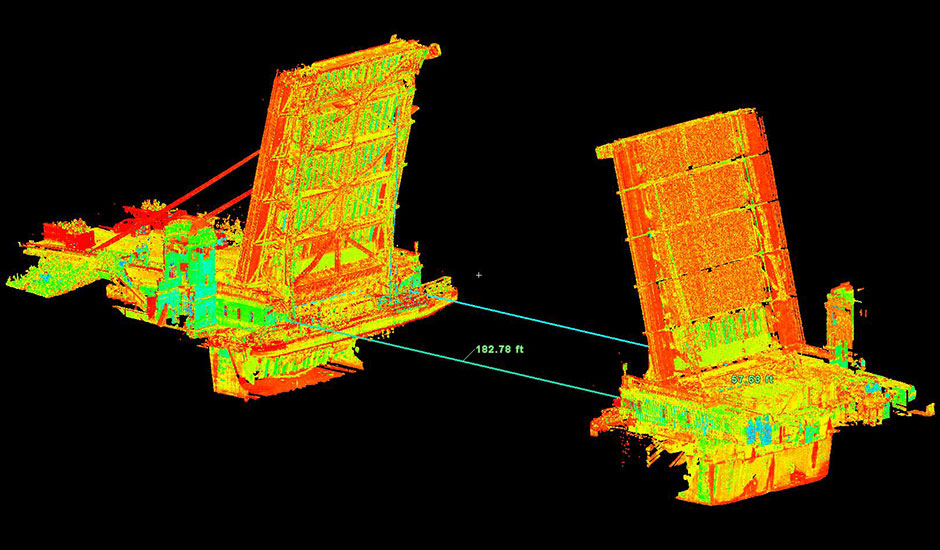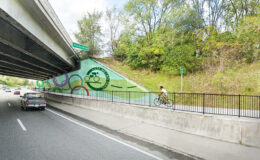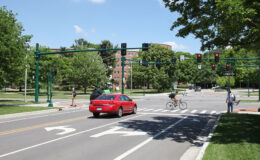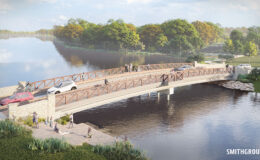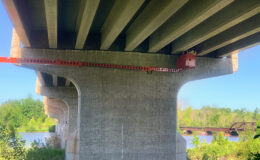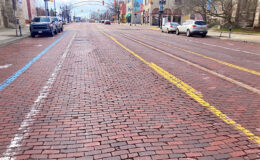High tech surveying and 3D modeling were used to evaluate repair methods for restoring operation of Wayne County’s historic Jefferson Avenue Bridge over the Rouge River in Detroit, MI. Extensive damage to this drawbridge’s north leaf and related mechanical features has kept it closed to vehicle traffic since a collision with a freighter in 2013.
Wade Trim completed a laser scan of the exterior of the bridge, interior machinery pits of the displaced north leaf, and the minorly damaged south leaf. After control and benchmarks were laid out, a Leica P-20 laser scanner was used to obtain more than 30 scan positions from both sides of the river. The scan positions were registered into a single point cloud that allowed our staff to obtain precise measurements and positions of all structural elements. It was determined that the north leaf has to be moved more than seven inches to properly align with the south leaf when the drawbridge is lowered into the horizontal position.
Bridge structures were modeled in 3D to show the amount of warping in the steel girders and beams. The 3D modeling also allowed measurements to be made on the center of the trunnion bearings’ axle, used to raise and lower the bridge spans, to show how much the structure had displaced. The model is being used by the design team to evaluate stresses and displacements caused by the collision and work methods to restore operation.
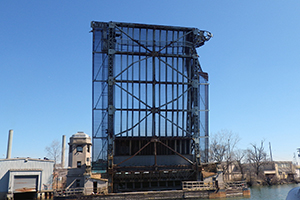
The north leaf of the bridge was twisted and pushed more than seven inches away from its anchor bolts by the collision.
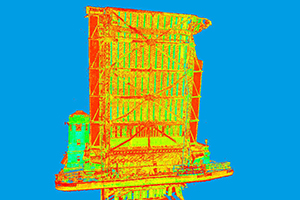
The laser scan allowed accurate measurements to be taken that will be used to plan structural repairs and movement of the north leaf back into the correct position needed for smooth operation.

